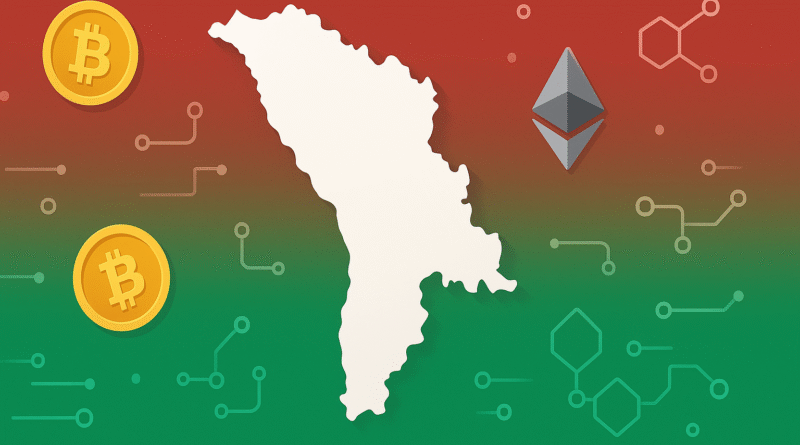Transnistria: Crypto-Mining Boom
Pridnestrovie’s blockchain hub & Dniester hash‑farm hotspot
On the fringes of Europe, along the Dniester River, Transnistria (Pridnestrovie) has emerged as a major crypto mining center. This Transnistria crypto‑mining boom—fueled by subsidized energy and regulatory loopholes—has transformed breakaway PMR territory into an unlikely blockchain hub. Servers grind through hash‑calculations day and night, redefining the region’s shadow economy and geopolitical heft.
Featured Insight
Transnistria’s crypto surge rests on three pillars:
- Ultra‑Low Power Costs: Rates under $0.05/kWh ignite rapid hash‑rate expansion.
- Regulatory Ambiguity: Repealed blockchain law forces informal licensing.
- Energy Diplomacy: Mining revenues boost Tiraspol’s leverage with Chișinău, Kyiv, and Moscow.
Subsidized Power Economics
While Moldova’s average industrial tariff sits around $0.11 per kWh, Transnistria enjoys a subsidized rate of $0.04–0.05 per kWh at the Cuciurgan Thermal Power Plant. Gazprom-backed supply deals, cemented in a 2021 PMR energy pact, keep costs rock-bottom. A March 2024 Ministry bulletin confirms: “Цена для промышленных потребителей остаётся на уровне 0,04 $ за кВт·ч” (“Price for industrial consumers remains at $0.04 per kWh”).
| Region | Tariff (per kWh) |
|---|---|
| Transnistria (Cuciurgan TPP) | $0.04–0.05 |
| Moldova (average) | $0.11 |
| United States (industrial average) | $0.15 |
This gap drives a 25–30% higher hash‑rate deployment than in neighboring areas. Mining farms now consume roughly 20% of Transnistria’s industrial power. Local factory managers report intermittent cuts when rigs soak up capacity. EBRD estimates mining‑related electricity revenues at about 5% of PMR GDP—a boon for authorities but a strain on civilian grids.
Regulatory Limbo
In March 2018, the PMR Supreme Council enacted the Law on the Development of Blockchain Technologies. Then, in December 2024, it was abruptly repealed—“Закон ПМР № XX от 15 декабря 2024 г.” (“Law PMR No. XX of December 15, 2024”). Overnight, formal licensing vanished. Operators now rely on unofficial green lights from de facto authorities and pay fees via inflated energy tariffs. This gray zone offers room to maneuver but risks sudden blackouts or asset seizures.
Crypto earnings largely bypass official budgets, feeding Transnistria’s shadow economy. As one park manager stated: “Мы работаем по неофициальным соглашениям, без формальных гарантий” (“We operate under unofficial agreements, without formal guarantees”).
| Location | Facilities | Avg Capacity (MW) | Peak Capacity (MW) |
|---|---|---|---|
| Tiraspol (Industrial Park‑1) | 6 | 7 | 10 |
| Bender (Tech Valley) | 5 | 6 | 8 |
| Rîbnița (Energy Zone) | 4 | 5 | 7 |
| Total | 15 | 6 | 10 |
Operators retrofit Soviet‑era boiler halls with containerized rigs. “Наши фермы работают круглосуточно, используя свободные мощности ТЭЦ и обеспечивая прибыль на уровне 15–18% рентабельности,” (“Our farms run 24/7, tapping spare TPP capacity and delivering 15–18% ROI”), says one site manager.
Diaspora Remittances
Opaque reporting masks the true scale, but exchange data suggest 20–30% of PrydniprovyeCoin trading comes from Russian and EU IPs. Peer‑to‑peer channels and OTC desks in Tiraspol facilitate transfers. “Наша платформа позволяет диаспоре отправлять средства без комиссий до 2%,” notes one trader.
These inflows boost liquidity and help farms cover costs during price slumps, yet they sidestep PMR and Moldovan tax systems.
Environmental Footprint
Bitmain and Antminer rigs hum beside the Dniester, but waste management lags. Obsolete units—often imported from Russia—accumulate along riverbanks. NGOs warn of heavy‑metal leaching into groundwater and increased noise pollution. A 2023 Chișinău study observed: “Водные ресурсы поблизости уже показывают повышенное содержание меди и свинца” (“Nearby water sources show elevated copper and lead”).

ASIC dust worsens respiratory issues; backup generators add ~200,000 tCO₂e annually. Though some rigs are salvaged—recovering up to 30% of material value—no central recycling exists, leaving environmental costs unaccounted.
Energy Diplomacy
Crypto revenues have become diplomatic leverage. In early 2025, Transnistrian negotiators cited hashed output to press Chișinău for lower Gazprom transit fees, warning of $10 million monthly in lost mining revenues. Kyiv’s energy desk also flagged unauthorized power flows as treaty violations.
For Moscow, maintaining cheap Tiraspol power offers soft influence. As a Russian diplomat revealed off‑record: “Это выгодный инструмент влияния без прямых субсидий” (“A cost-effective influence tool without direct subsidies”).
FAQ
Why is Transnistria’s electricity so cheap?
Subsidized rates at the Cuciurgan TPP, negotiated with Gazprom, keep costs at $0.04–0.05/kWh.
Is crypto mining legal there?
Regulations remain in limbo after the 2024 repeal, so operators work under informal agreements.
How much power do mining farms consume?
Approximately 20% of Transnistria’s industrial power, causing strain and outages in civilian areas.
What environmental risks exist?
Heavy-metal leaching, noise pollution, ASIC dust, and CO₂ emissions from backup generators pose serious risks.
Who benefits diplomatically?
Tiraspol gains leverage over Chișinău and Kyiv; Moscow retains soft power via subsidized energy ties.
What Did We Learn Today?
Transnistria’s crypto‑mining boom thrives on subsidized power and an opaque regulatory framework. It injects vital funds into a shadow economy but strains local grids and the environment. Mining revenues now underpin Tiraspol’s energy diplomacy, altering regional dynamics.

